Evaluierung von Subventionsprogrammen
Diese Forschungsgruppe untersucht die Effekte von Produktions- und Wissensnetzwerken auf die Produktivität von Unternehmen und Regionen. Darüber hinaus werden Wirkungen staatlicher Förderprogramme für Forschung und Entwicklung sowie regionalpolitischer Programme auf die Leistungsfähigkeit von Unternehmen und Regionen evaluiert.
Zentrum für evidenzbasierte Politikberatung (IWH-CEP)
Forschungscluster
Wirtschaftliche Dynamik und StabilitätIhr Kontakt

Mitglied - Abteilung Präsidialbereich
PROJEKTE
09.2019 ‐ 09.2022
Etablierung einer evidenzbasierten Evaluationskultur für industriepolitische Fördermaßnahmen in Deutschland (EVA-KULT)
Europäischer Fonds für regionale Entwicklung (EFRE)
Das Vorhaben dient dem Ausbau des Zentrums für evidenzbasierte Politikberatung am Leibniz-Institut für Wirtschaftsforschung Halle (IWH-CEP).
01.2018 ‐ 12.2020
Vernetzt wachsen - Innovatives Sachsen-Anhalt durch digitale Geschäftsmodelle (Kompetenzzentrum 4.0)
Bundesministerium für Wirtschaft und Energie (BMWi)
01.2017 ‐ 12.2018
Politische Partizipation in Ostdeutschland
Bundesministerium für Wirtschaft und Energie (BMWi)
12.2015 ‐ 11.2018
Sozioökonomische Effekte der Erforschung innovativer Ansätze für die POC-Diagnostik
Bundesministerium für Bildung und Forschung (BMBF)
Teilvorhaben im Verbundprojekt “POC-Sensorplattform für chronisch-entzündliche Atemwegserkrankungen (EXASENS)”. Neun Leibniz-Institute arbeiten gemeinsam im Pilotprojekt EXASENS an der Erforschung einer Point-of-Care-Technologie zur Vorhersage und Diagnose von chronisch-entzündlichen Atemwegserkrankungen. Der Verbund wird vom Bundesministerium für Bildung und Forschung (BMBF) mit 6,25 Millionen Euro gefördert und liefert einen Beitrag zum Ausbau und zur Stärkung des Themenfeldes Gesundheitstechnologien.
Vgl. Pressemitteilung des Leibniz-Institut für Photonische Technologien (IPHT), Jena.
02.2017 ‐ 02.2018
Bedeutung außeruniversitärer Forschungseinrichtungen für die Entwicklung von Betrieben und Regionen
Bundesministerium für Bildung und Forschung (BMBF)
01.2015 ‐ 12.2016
Evaluierung der GRW-Förderung in Sachsen-Anhalt
Investitionsbank Sachsen-Anhalt
Referierte Publikationen
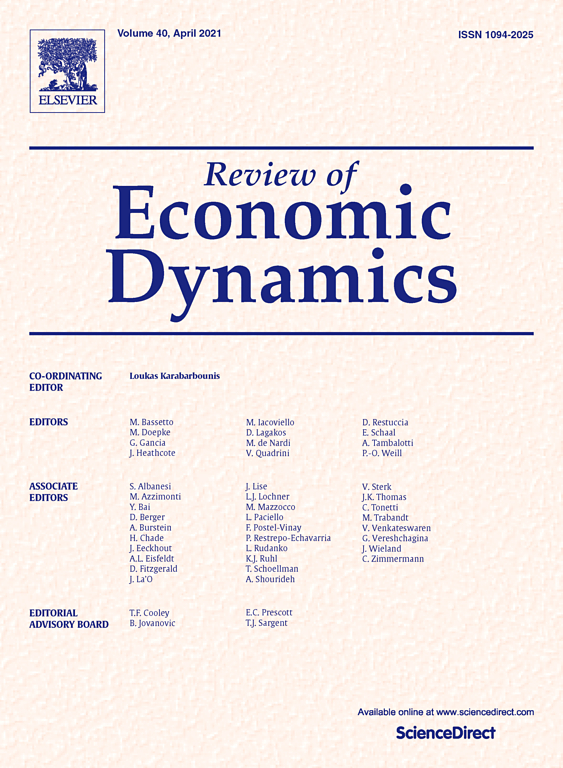
Burdett–Mortensen Model of on-the-Job Search with Two Sectors
in: Review of Economic Dynamics, Special Issue in Honor of Dale Mortensen 2016
Abstract
The focus of this paper is on the steady state of a two-sector economy with undirected search where employed and unemployed workers can search for jobs, both within a sector and between the sectors. As in the one-sector model, on-the-job search generates wage dispersion among homogeneous workers. The analysis of the two-sector model uncovers a property called constant tension that is responsible for analytical tractability. We characterize the steady state in all cases with constant tension. When time discounting vanishes, constant tension yields the endogenous separation rate in each sector as a linear function of the present value for a worker. The one-sector economy automatically satisfies constant tension, in which case the linear separation rate implies that equilibrium offers of the worker value are uniformly distributed. Constant tension also has strong predictions for worker transitions and value/wage dispersion, both within a sector and between the two sectors. When constant tension does not hold, we compute the steady state numerically and illustrate its properties.
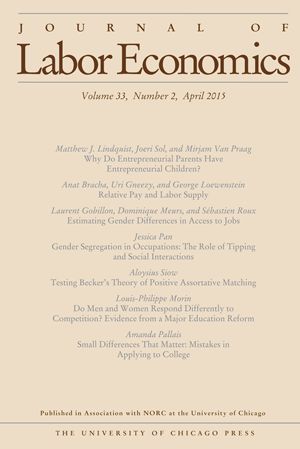
Unemployment in the Great Recession: A Comparison of Germany, Canada, and the United States
in: Journal of Labor Economics, S1 Part 2 2016
Abstract
This paper looks at the surprisingly different labor market performance of the United States, Canada, Germany, and several other OECD countries during and after the Great Recession of 2008–9. A first important finding is that the large employment swings in the construction sector linked to the boom and bust in US housing markets is an important factor behind the different labor market performances of the three countries. We also find that cross-country differences among OECD countries are consistent with a conventional Okun relationship linking gross domestic product growth to employment performance.
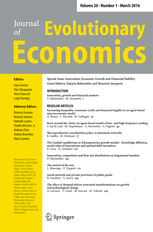
The Structure and Evolution of Inter-sectoral Technological Complementarity in R&D in Germany from 1990 to 2011
in: Journal of Evolutionary Economics, Nr. 4, 2015
Abstract
Technological complementarity is argued to be a crucial element for effective R&D collaboration. The real structure is, however, still largely unknown. Based on the argument that organizations’ knowledge resources must fit for enabling collective learning and innovation, we use the co-occurrence of firms in collaborative R&D projects in Germany to assess inter-sectoral technological complementarity between 129 sectors. The results are mapped as complementarity space for the Germany economy. The space and its dynamics from 1990 to 2011 are analyzed by means of social network analysis. The results illustrate sectors being complements both from a dyadic and portfolio/network perspective. This latter is important, as complementarities may only become fully effective when integrated in a complete set of different knowledge resources from multiple sectors. The dynamic perspective moreover reveals the shifting demand for knowledge resources among sectors at different time periods.
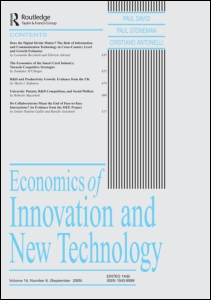
R&D Cooperation with Scientific Institutions: A Difference-in-difference Approach
in: Economics of Innovation and New Technology, Nr. 5, 2016
Abstract
Economists and business managers have long been interested in the impact of research and development (R&D) cooperation with scientific institutions on the innovation performance of firms. Recent research identifies a positive correlation between these two variables. This paper aims to contribute to the identification of the relationship between R&D cooperation with scientific institutions and the product and process innovation performance of firms by using a difference-in-difference approach. In doing so, we distinguish between two different types of scientific institutions: universities and governmental research institutes. For the econometric analyses, we use data from the German Community Innovation Survey. In total, data from up to 560 German service and manufacturing firms are available for the difference-in-difference analyses. The results suggest that R&D cooperation with universities and governmental research institutes has a positive effect on both product innovation and process innovation performance of firms.
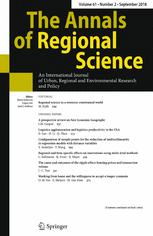
On the Trail of Core–periphery Patterns in Innovation Networks: Measurements and New Empirical Findings from the German Laser Industry
in: Annals of Regional Science, Nr. 1, 2015
Abstract
It has been frequently argued that a firm’s location in the core of an industry’s innovation network improves its ability to access information and absorb technological knowledge. The literature has still widely neglected the role of peripheral network positions for innovation processes. In addition to this, little is known about the determinants affecting a peripheral actors’ ability to reach the core. To shed some light on these issues, we have employed a unique longitudinal dataset encompassing the entire population of German laser source manufacturers (LSMs) and laser-related public research organizations (PROs) over a period of more than two decades. The aim of our paper is threefold. First, we analyze the emergence of core–periphery (CP) patterns in the German laser industry. Then, we explore the paths on which LSMs and PROs move from isolated positions toward the core. Finally, we employ non-parametric event history techniques to analyze the extent to which organizational and geographical determinates affect the propensity and timing of network core entries. Our results indicate the emergence and solidification of CP patterns at the overall network level. We also found that the paths on which organizations traverse through the network are characterized by high levels of heterogeneity and volatility. The transition from peripheral to core positions is impacted by organizational characteristics, while an organization’s geographical location does not play a significant role.














